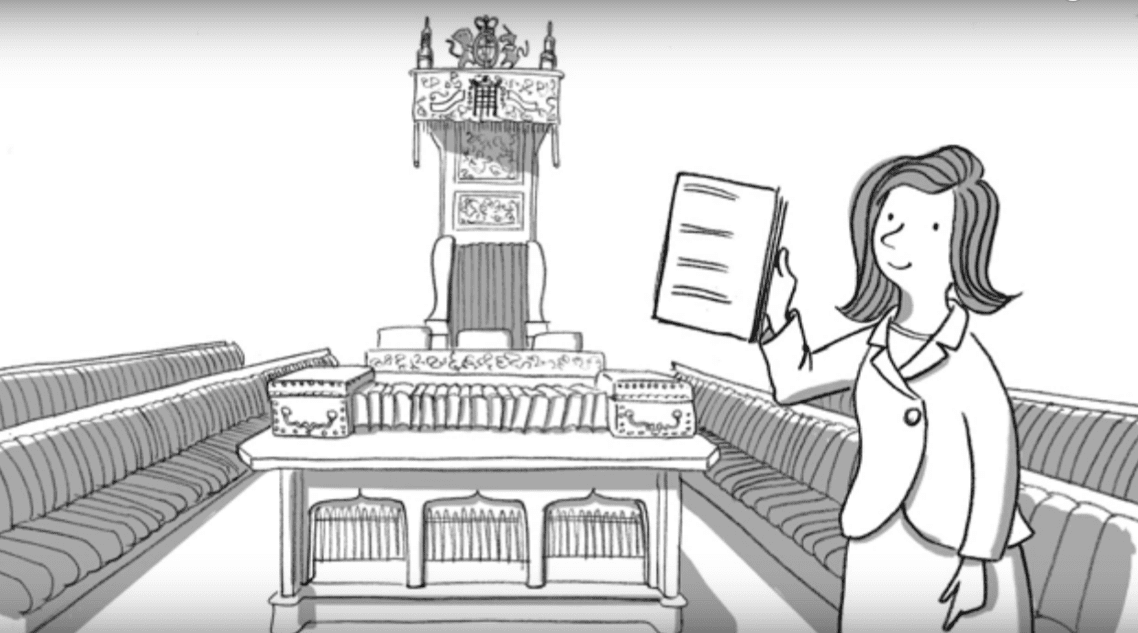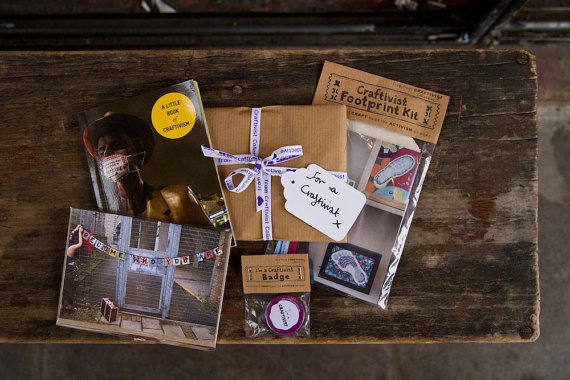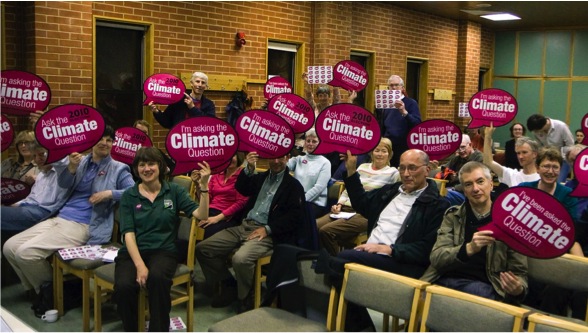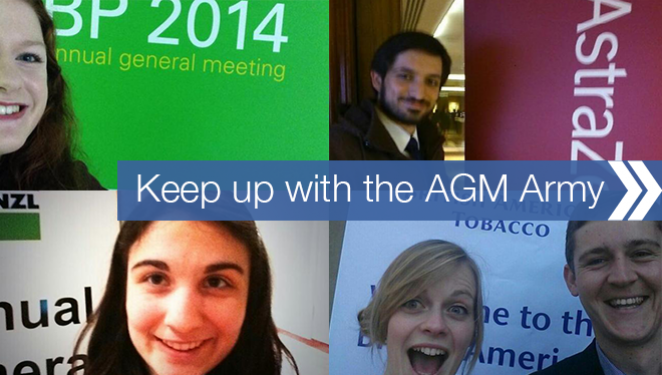At the time of writing the petition to Prevent Donald Trump from making a State Visit to the United Kingdom has reached 1,500,000 signatures – and I’m sure by the time you read this it’ll have grown further.( This site is a nice for tracking how quickly they’re growing).
And while it’s great that people are finding out an outlet for their anger at the policies of Donald Trump, every time I see a House of Commons Petition get shared I’m always frustrated that it’s probably not directing people’s views in the best way.
For me, the site feels as much as an attempt to dissuade people from emailing their MP than a real tool for change. That’s a missed opportunity.
From the launch of the petition website in 2010, I’ve been critical about it’s purpose, and while it’s improved under the guidance of the Petition Committee, watching the numbers tick up today on the Donald Trump petition has once again reminded me of some of the limitations of the site.
1 – The can create a debate but do they change policy? While any petition that get’s over 100,000 signatures is considered for a debate in Parliament, not all do end up getting debated (46 have since the 2015 election), and even then the debate almost always takes place in Westminster Hall (which is seen as a secondary debating chamber).
So while they debates can be good opportunities for MPs to put their views on the record, the outcome is unlikely to change government policy, there are a few examples of the opposite but they’re rare when you consider the number of people who’ve signed petitions in the last 12 months.
While those of us who run campaigns on other platforms might not see that as ‘our’ problem, its bad for all of us, because it undermines our claims that taking action can deliver change.
2 – They don’t channel energy productively. The petition on Trumps visit is a great example of try to harness stop energy but because the petition site has no function to develop a supporter journey that energy doesn’t go anywhere else. If you sign a petition the only other email you’ll get it as notification of if it’s been successful or not. It’s hardly a way of turning people into engaged citizens.
3 – I can’t see any evidence that the petition signatures get noticed by MPs – I know that some of the petitions get debated (46 so far, with another 300+ getting a response from Government) so will be picked up by some, but the way that the information is expressed on the site (with the exception of this map) doesn’t do anything to show specific MPs what their constituents think about an issue. It feels like a missed opportunity.
Now the site isn’t going to go away and as I’ve suggested before with MPs growing tired of ’email your MP’ actions it could be an effective way to channel views of constituents.
So what could be done to make it more user friendly? Here are a few suggestions;
1 – Make it easier to connect MPs with constituency level information – while data is available on a constituency level, it’s not easy for any MP to find out how many people are signing in their patch. To address this, it could be a tool that displays the number of signatures on a petition per constituency, or ranks the most popular petitions in a constituency. It’d be a dynamic way to help MPs see what their constituents actually think.
2 – Find ways of getting real Parliamentary champions to back the petitions – although petitions that go to debate get an MP allocated to it (normally a member of the Petition Committee), I’ve not seen any real evidence that those MPs are really passionate about ensuring that the demands of the petitions are actively pushed – for some doing that would go against the position of their party. But many MPs are passionate about issues, so why not connect those MPs with the issues they’ve long worked on event if they’re not on the Petition Committee.
3 – Ensure any petition that gets over 100,000 signatures get raised directly with a Minister – rather than just a Westminster Hall debate, the most issues raised in the most popular petitions could be raised in the relevant Ministerial Question Time. Taking that a step further, when the Prime Minister comes to the Liaison Committee could they be asked about the issues raised in the top petition in that period.
4 – Allow third party sites to submit petitions – at the moment you can only submit your petition, but what about working with Change.org, Care2 or other digital providers to allow for petitions signed on those sites to be submitted. It would incentives organisations. In the US, the White House under Obama worked to develop an API that allowed people to contribute to their petitions site via third party sites.
Category: tactics
10 reflections from NCVO Campaigning Conference
It was the NCVO Campaigning Conference yesterday – it’s always an interesting day bringing together a mix of campaigners and public affairs colleagues from across a range of issues.
As always you walk away with a notebook – or in my case multiple scraps of paper – full of notes, thoughts, good ideas and top tips – and a frustration you couldn’t be in more than one session.
Here are 10 things that I took from my morning at the Conference – do check out #ncvocc for more insight.
1. Brexit is the focus for government – both Jess Phillip MP and Jonny Mercer spoke about how the Brexit negotiations will dominate everything that happens in Parliament and Whitehall in the coming years. It’s not just because it’s the most important political decisions that many of us will see in our lifetimes, but it’s also because it’s taking up so much capacity from civil servant and ministers other issues are getting pushed to the side. Campaigners looking to get noticed will have to push harder than ever.
2. MPs really are tired of email petitions – so this isn’t news, and you almost expect to hear it from MPs in sessions like this, but when two pro-campaigning MPs who are instinctively on our side tell you that they’re fed up of pre-written email petitions, you know it’s time to think long and hard about if the tactic is doing more to hinder than help. Jess reminded us that she get’s over 6,000 emails every day, and the response to any pre-written email is to ensure a member of staff responds with a standard template email.
3. It’s MPs staff you should be getting to know – they’re the gatekeepers to most MPs, the ones who make key decisions about diaries and briefings. Build good relationships with them and it can really help you to get your campaign in front of an MP. Treat them badly and don’t expect to see much progress.
4. Ask do you really need to be in a coalition – I was fortunate to chair a really lively and interesting session on coalition campaigning. Jane Cox from Principle Consulting reminded us that there is a cost to coalitions (perhaps Jane had ready my blog on this) – sometimes a strategic partnership is a better approach than the time commitment an effective coalition can be. Jane wrote a really useful post with some of her learning from coalition campaigning.
5. Keep going until the end – too many coalitions just focus on the immediate change outcome, and when they’ve succeeded in delivering that they stop. That can be a mistake and often ensuring that you monitoring implementation is as important. This is something that you should factor into your planning – especially when applying for foundation support for your campaign.
6. We need to talk about power – Heather Kennedy from the Fair Funeral Campaign reminded us of the principle from organising that you either have organised money or organised power – if you’re opposition is organised money it can be easy for them to ‘sit it out’ until you’re coalition has come to an end. It was one of the few references through the day to power – which given campaigning is often about winning feels like it was something missing from the conversation.
7. Celebrate success in a generous way – Heather shared about how the Funeral Poverty Alliance has built it’s coalition over the last few years and managed to put the issue on the agenda – it sounds like a really great campaign coalition which doesn’t have lots of governing documents but has placed building relationships through well facilitated strategy sessions and strong face-to-face relationships. Demonstrating that coalitions don’t have to be dominated by ‘egos and logos’!
8. When developing campaign leaders high commitment should mean high support – I really enjoyed the session on developing volunteers as campaign leaders – it felt that there was a recognition that in response to the declining effectiveness to e-petitions we need to look again at building our networks.
I’ve been aware of the work that Alice Fuller and her team at the MND Association have been doing at building a network of Campaign Contacts in their local groups over the last few years, but it was great to hear more about it – and to hear some honest reflections about how much the team have learnt about the level of support they need to provide, the commitment to training and investing in volunteers, but also letting go and trusting volunteers.
9. Metrics matter – Eleanor Bullimore spoke about the work, and the challenge of developing relevant metrics to measure the impact of the work that volunteer network at The Ramblers is having. Elle suggested that as well as developing metrics for going up the the ‘ladder of engagement’ we also need to be looking at those going down – recognising that some volunteers will find they have less rather than more to offer.
10.Trust us – Joining Alice and Eleanor was Katy Styles, one of MND Associations local campaigners. It was so refreshing to hear of the ways that Katy had been able to get involved in leading MND’s campaign (Katy has helped to produce this cracking toolkit) – and to be reminded that most people aren’t paid to campaign they do it because of a passion. The big message that I’m taking from Katy was as professional campaigners we need to let go of our concerns about brand and reputation and trust our volunteers.
Update – all the presentations from the sessions are available here.
Why Craftivism matters to me
Being the romantic that I am, to celebrate our first anniversary of dating I took my now wife, Demelza, to the 2003 Stop the War march in London.
We got about a quarter of the way around before it turned out that Demelza didn’t really like marches, so we headed into a bookshop on the route to watch the rest of the crowds go past.
It made me appreciate that not everyone is into marches, or the approaches to activism that are often the first that we encourage people to take in campaigning.
It’s one of the reasons I’ve come to appreciate the Craftivism (Craft + Activism = Craftivism) led by inspiring people like Sarah Corbett, despite not being a natural candidate to get out my needle and thread out.
It’s easy to scoff at craftivism. What difference does it make? Wouldn’t our resources be better focused on organising another march or stunt?
For me there 3 reasons why even the non-craft minded campaigner should be grateful that craftivism exists.
1 – Perhaps less is more? Craftivism presents an opportunity to do something different. This collaboration between Share Action and the Craftivist Collective targeting M&S shows that craftivism probably won’t lead to bulging postbags, but it can still have an impact on the ‘target’. Indeed this research suggests that for some decision the greater the volume of constituent contact they get the more they may devalue those grassroots lobbying efforts.
2 – Use the whole brain – Even for a campaigner who thinks that they’re the most uncreative, craftivism provides an opportunity for creative escape. It’s an opportunity to get creative, and reflect on how to solve problems using both right analytical and left creative sides of our brains.
3 – It’s good to slow down – As the Craftivist’s Manifesto says its all about slowing down and taking a ‘thoughtful approach to mindful activism’. In an environment where we spend so much time rushing from tactic to tactic, often fuelled by the excitement of social media we all need to find ways to practice mindfulness. Craftivism can help to provide that.
If you’re interested in learning more about Craftivism have a look at this training day that’s running on 10th December, and if you’re (already) stuck for ideas for Christmas, then Craftivism Collective’s shop is a good place to start.
Using your voice as well as your vote – 7 things you need to know about election campaigning
I need to start with a confession. I’m an election geek! My fascination with elections has taken me to the US to campaign for President Obama and I know an unhealthy amount about the electoral systems in countries around the world.
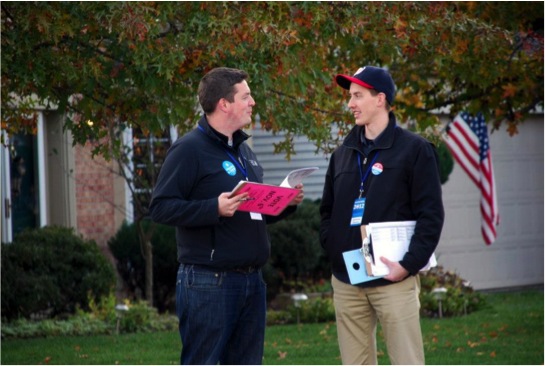
For campaigners, they’re hugely exciting – they engage people in politics and they’re opportunities to shape the agenda for the next government.
With just 120 days or so to go until the next UK General Election, there is a huge amount that we don’t know about what the outcome will be on May 7th.
That’s a huge opportunity and challenge for campaigners, we could get another Coalition Government, we don’t know which parties will end up in the TV debates, and what will happen in Scotland, with UKIP and the Green Party.
At the same time, election campaigns are getting more and more sophisticated, with parties using micro-targeting to reach specific groups, and social media working alongside the traditional ground game (think people knocking on doors) and air game (think TV news headlines).
For campaigners preparing for the election in May there are 7 things you need to be thinking about.
1 –Remember Charities can be political but not party political
Its too easy to think of politics as something that is just about different parties, but it’s not, politics is about the choices societies make and we have a stake in them being the right choices – including challenging vested interests.
If it wasn’t for campaigners engaging in politics, we wouldn’t have an arms trade treaty, equal marriage, climate change act, and much more.
Thanks to the Lobbying Act there is lots of talk about if charities should get involved in politics, but the short answer is yes.
As charities, you can’t engage in party politics, that is supporting one candidate over another, or providing an endorsement to one but not another, but we can, indeed we’re encouraged to engage in politics.
As we get ready for May, every campaigner should check out the guidance from the Electoral Commission on the Lobbying Act and the Charity Commission (Bond also has some helpful guidance) but that shouldn’t stop you from campaigning.
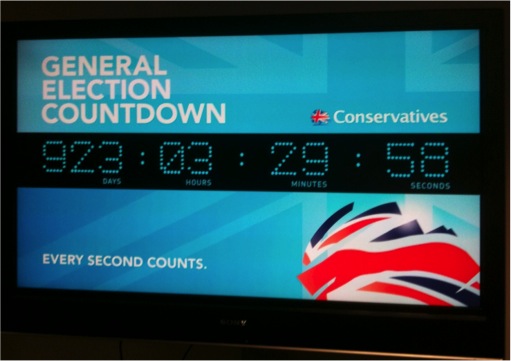
2 – Start now
Walk into the HQ of all of the main parties and you’ll see countdown clocks on their walls. For them the election has already started, and it’s got a fixed deadline – 10pm on May 7th, the point when polls close and nothing else can be done.
At the moment, in most constituencies’ candidates from any of the parties that hope to have a chance of winning will have been selected. For those candidates the most precious commodity they have is time, and as they get closer to the election, they’ll be thinking more and more about how they use their time to ensure they’re speaking to voters. Right now, candidates are busy, but not as busy as they will be in a few weeks time.
Come the ‘short’ campaign, which starts on 30th March, candidates are moving from one event to other, and they’re already starting to plan now for then, getting going now means your campaign has a chance of establishing itself before its just another event or activity in an already busy day.
3 – Everything is Local
There are few better ways of getting a sense of what people are thinking about than knocking on the doors as part of a party canvass, and as much as I’d like the top issues to be global poverty, climate change and world peace. More often than not its parking, poo, potholes, pavement and flytipping or welfare issues – housing, immigration, benefits. Occasionally global issues, but they’re rare.
For any campaign that means making your issues local as well, that could be making connections to local figures or events, ensure your statistics are localised or finding local figures to speak out in support of your issue.
Whatever you can do to demonstrate the breadth of local support for you campaign the better. Remember most candidates are thinking about events to attend alongside two axis the likelihood of those present actually voting and the likelihood of someone in the room voting for them, so make sure
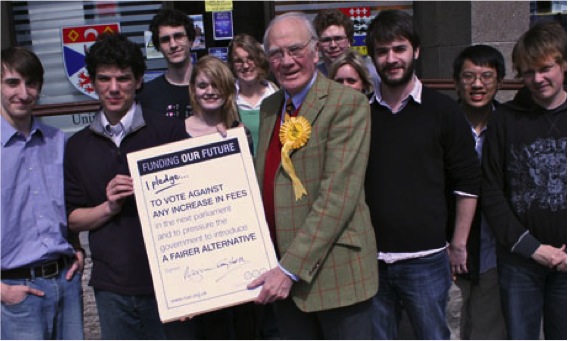
4- Make it Easy
Most candidates are keen to engage, they want to meet with voters, but remember they are time poor, so make it easy for them to engage with you and also their office staff. Behind ever candidate is a team who will be working hard and often making the decision about what events the candidate does and doesn’t attend.
Provide candidates with something in return for engaging with your campaign, the opportunity to meet local voters, a photo they can send to the local paper or thanks on twitter.
Also think about the medium of your message, most candidates will tell you that they’re already being inundated with emails and briefing papers, so what about video messages or infographic.
Finally, think about how they can really support your campaign – what can they actually do. Don’t ask a candidate to vote a particular way in Parliament if they’re not (yet) an MP.
5 – If they won’t come to you, go to them
One of the exciting thing about the upcoming election is I’m expecting more platforms that ever before to ask candidates the questions you want.
As well a the traditional hustings, often organised by local churches, this election most candidates are on twitter and looking to engage, local papers will run election specials, the growth of online localised communities holding ‘ask the candidate’ discussions or raising it when someone comes to knock on your doorstep. Whatever you can ‘get on the record’ now could invaluable come May 8th.
Heading into May, watching how parties respond to pledges is going to be interesting. Lots of campaigns ask candidates to sign pledge to show their support for an issue. It can an effective tool, but one I suspect many candidates will now approach with caution, especially as the possibility of a coalition government means MPs can be even less certain about what they can promise.
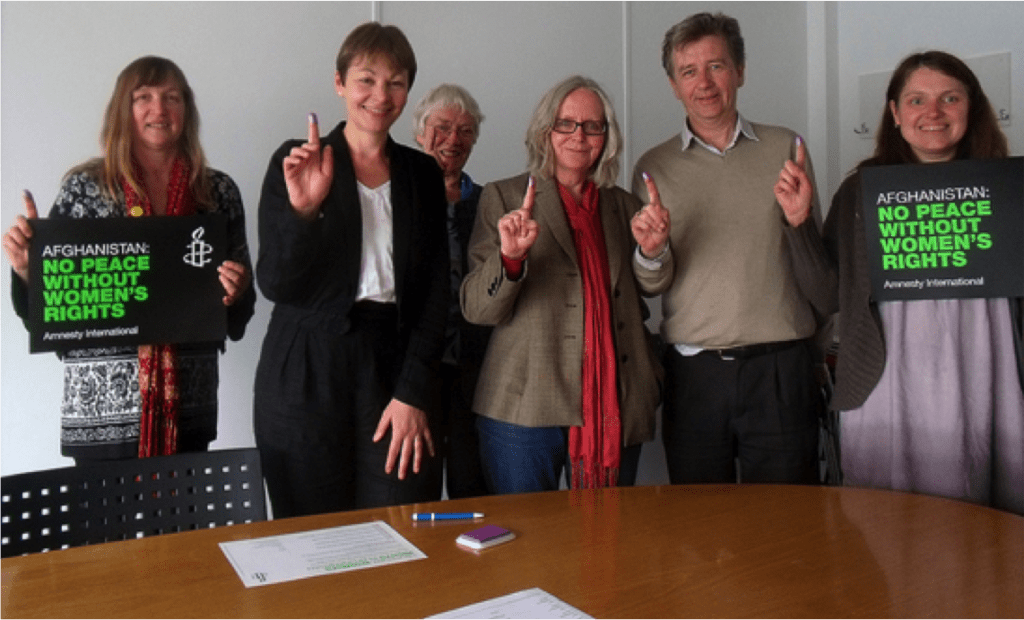
6 – Plan for May 8th
The election may be over, but the hard work for whoever is elected has just begun. Be ready to follow up with those who’ve been elected, politicians are often accused of only appearing near an election but can the same be said of campaigners?
Offer to come to meet with them to brief them on the issue, write to them, reminding them of what the said in the campaign and don’t overlook getting in touch with the candidates that weren’t successful – remember that they might be candidates in another election.
7 – Vote
I hope that most campaigners vote. I have a rule on election day, that you can’t show up to help get out the vote if you’ve not already voted. If we want to participate in campaigning, we need to vote. If your not sure you’ll be in your constituency on election day, sign up for a postal vote here.
Winning in 2014 – 7 great campaigns from the last year
Owen Jones is spot on, 2014 is the year that grassroots campaigns like E15 Mums have taken on the powerful and won, but here are a few of the other campaigns that have impressed me in last 12 months.
1 – AGM Army – Share Action – this small team are building an army of shareholder activists who are become the scourge of corporates, with their AGM Army turning up at annual meetings across the year, calling on Tesco to commit to a Living Wage to asking Greggs about animal welfare, I love how they’re taking a campaigning approach that has existed for year, and with digital tools and good old fashioned training helping to show that the simple act of owning a share gives huge influence. This article is a great summary of what they’re doing.
2 – Towns Against Tax Dodging – Action Aid – I’ve had a long-held admiration from the innovative and creative approach that the team at Action Aid take, from tax to biofuels, I get excited when their latest mailing arrives on my doormat, I love their smart campaigning thinking about new targets and approaches, rather than simply focusing on the traditional trinity of MPs, Whitehall and the UN. The recently launched Towns Against Tax Dodging is a brilliant way example of this.

3 – Rainbow Laces – Stonewall – Off the back of a huge victory on Gay Marriage last year, you might have expected them to take some time to reflect on what’s next (although if you know any of the team you’d have known that was unlikely to be the case, instead they come back with innovative new campaigning , like Rainbow Laces, focusing on kicking homophobia out of football, partnering with Paddy Power to send laces to every Premiership team. The ability to bring the voices of well known brands into their campaigning is seriously impressive.
4 – Unmute – Which – I’m continually impressed by the tone and approach of the campaigns from an organisation focused on being a consumer champion. They mix it up with a range of approaches, for example with the Unmute campaign which mobilised 50,000 to unlock a exclusive track from George The Poet, unlike many organisation that has been campaigning for years, they seem to have been able to adapt their approach to mirror the membership and consultation approach that has been pioneered by digital platforms.
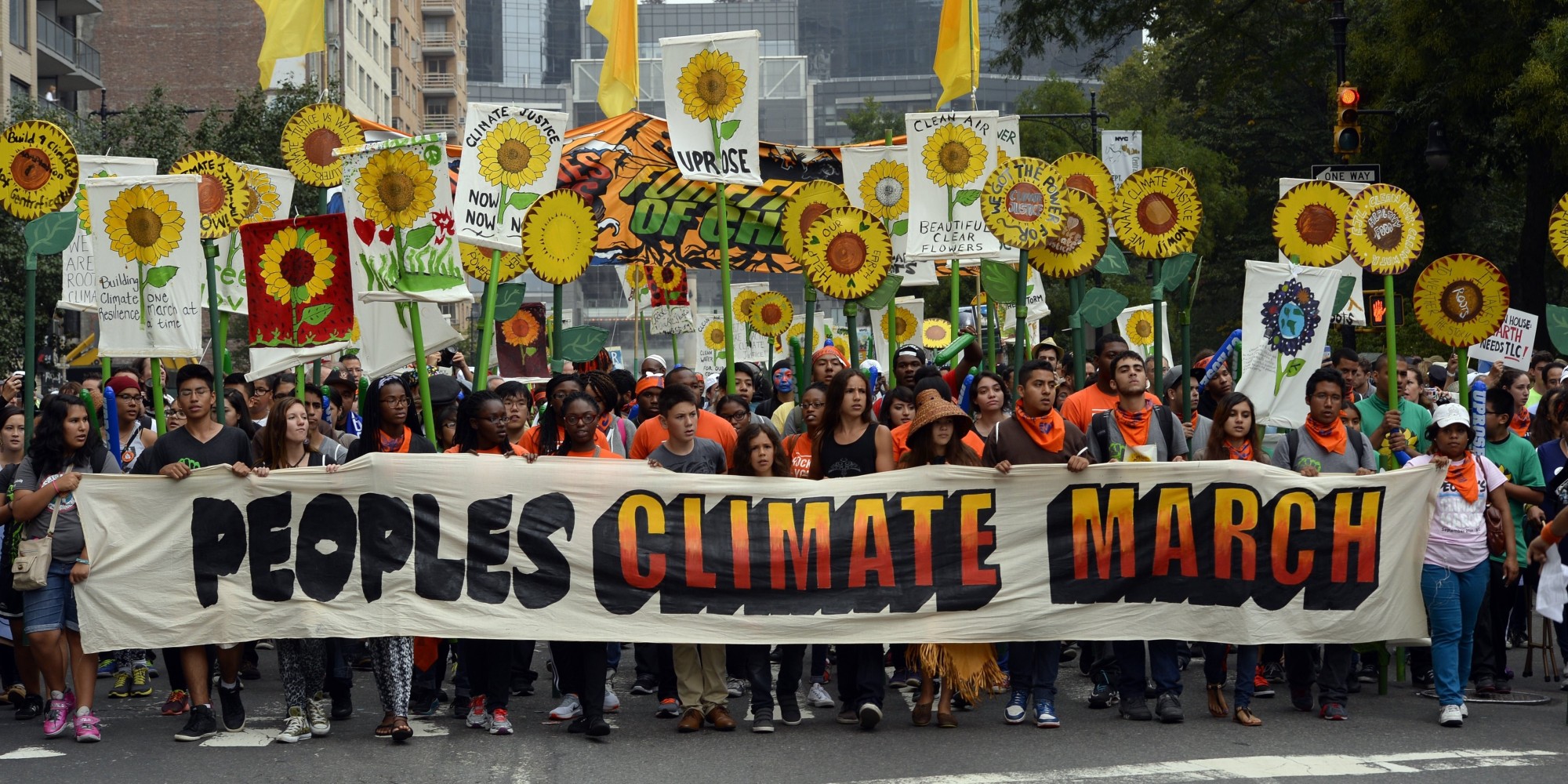
5 – People’s Climate March – 350.org – one of the organisations behind the People’s Climate Marches in September which seem to have reenergised the climate movement. I’ve been a long time fan of the approach which seeks to blend the best of community organising and digital activism across so many countries.
6 – Stop TTIP – 38 Degrees – perhaps a predictable choice, but I’ve been seriously inspired by the way that they’re building an organisational model that takes the best of their digital platform and allows them to mobilises offline as well as quickly online. Getting 10,000 people out in September to campaign on TTIP is just the latest example of this approach, it’s easy to be critical of ‘clicktivism’ but they’re showing that the approach can be used to do so much more.
7 – Space for Cycling – London Cycling Campaign – who used local elections in London back in May to target candidates with ultra-local campaign asks sourced from their supporters for each of London’s 629 election wards, an impressive achievement combined with a brilliant website, helping to ensure their asks got traction with candidates across the capital.
Making the most of Freedom of Information
 I spent time on Friday sharing some of my experiences of using Freedom of Information with members of the Campaign Forum.
I spent time on Friday sharing some of my experiences of using Freedom of Information with members of the Campaign Forum.
It’s a group of campaigners from across the sector that get together every quarter to share learning from their campaigns and hear from outside speakers.
I’ve always believed that it’s an under utilised tool for our campaigning, and if used well can help us to access invaluable information that allows our campaigns to be more effective.
It was encouraging to hear that many of the organisations present had made us of Freedom of Information in their campaigning work.
One good recent example of this approach was by Scope who worked with Demos to put together this interactive map of cuts to disability services across England and Wales.
As well as sharing a brief introduction to using Freedom of Information, drawing on the materials from the Campaign for Freedom of Information, I also shared a few top tips for making the most from it;
My tips were;
Be specific – That it’s very easy to have requests rejected because they’re asking for too much information, and as a result fall foul of the set limits that authorities have for ‘checking whether it holds the information, finding and extracting the information’. To avoid this, you need to be specific with what you’re requesting, and make use of time scales, titles of specific organisations/campaigns or locations to help to refine your asks.
I also shared the advice that Chris Coltrane had shared at the Netroots conference, that if you find that your request is rejected because they’ve calculated that it’ll cost too much to find, ask them how they’ve come to that calculation.
Be patient – Under law you’re meant to get a response within 20 working days, but it often seems that the deadline slips. Make sure you keep a good record of what you’ve requested and when, and follow-up once the 20 days have passed.
Ask for advice – That ‘ve found that Freedom of Information officers have often been very helpful it helping to access the information I’ve been looking for, and that you can make it easy for them to get in touch with you by providing a phone number with your request.
It takes time – If you’re an organisations planning to use the information in a media report or similar, don’t expect to have it all together in under a month. Plan well ahead and realise that the process of requesting the data itself is as time-consuming as processing the data afterwards! Campaigners present shared how they’d found it to be a really good project to involve interns in.
Request the data format – This is a lesson that I’m learning the hard way, from not doing so in my last round of request. I’ve got the information back in a whole range of formats, including pdfs which are incredibly hard to extract data from. You can specify the format that you want the information in, and the authority is required to comply with your preference so long as that is reasonably practicable.
You don’t have to justify why you want the information – But I suggested if you are worried about how requesting the information might impact a relationship with an official you can always do so in a personal capacity or work with a colleague to request it.
And the useful advice from the group;
Test out your request – A couple of campaigners spoke of how when they’ve been using Freedom of Information for large-scale requests they’ve tested out the request they’re making with a few friendly FoI Officers first to check that its understandable.
Get the Information Commissioner involved – One campaign spoke of how they’d still not heard back from some local authorities after a number of months and had as a result got the Information Commissioner involved. It’s a good reminder that there is recourse available if you’re not happy with the initial response.
I’ll keep an eye out for good uses of Freedom of Information by campaigns. What tips would you add, or what questions do you have?
Three great campaign innovations from ONE
Three really nice campaigning innovations from the ONE Campaign that I’ve come across in the last few weeks.
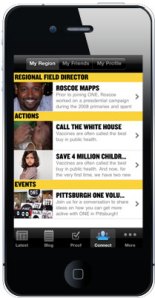 1 – The ONE Campaign App
1 – The ONE Campaign App
Only available in the US, the iPhone app allows those who download it to stay in touch with the , access key information, connect with staff and take action. If anything it looks like the app is asking users to do much, but I love the feature that allows you to phone your Representative or Senator (complete with a script if you’re not so confident), as well as the integration that makes it easy to share the latest petition with their friends.
I’m sure the challenge of any app is to ensure that users go back to it regularly, but given the massive growth in the use of smartphones over the last few years I’m surprised that more organisations haven’t invested in similar technology.
2 – The DATA Report as an eBook
Another first? I’m not aware of other organisations that have made their flagship policy report available like this, but it makes so much sense to develop it given the environmental benefits and also the cost of sending hundreds of copies to policy makers. Be great to see more policy reports available like this.
3 – TweetNumber10
I’ve highlighted this before, but its such a great website and a really simple user experience. Just a few clicks and you’ve sent a tweet to Number 10. While its interesting that they ‘only’ persuaded 5,000 people to take action, compared to the tens of thousands that normally sign their online actions, I’m sure we’ll see lots more organisations using a similar approach.
Looking beyond the usual corporate suspects
I was struck by this comment in a great post by David Ritter on campaigning trends that corporates need to be ready to respond to in the coming year;
NGOs are increasingly looking beyond the usual corporate suspects for campaign targets.
Ritter goes on to cite the example of ‘the global management consultancy McKinsey has been targeted by Greenpeace and the Rainforest Foundation for its ‘bad influence’ on deforestation. In McKinsey’s case – and to be brutally frank – for a global management consultancy that makes its living telling other people what to do, they’ve made a real mess out of how they have responded to being a campaign target.
 Another great example of this approach, has been the campaigning that Sum Of Us have been doing toward the corporates that support the work of the Heartland Institute, a US think tank that has spent millions promoting climate scepticism.
Another great example of this approach, has been the campaigning that Sum Of Us have been doing toward the corporates that support the work of the Heartland Institute, a US think tank that has spent millions promoting climate scepticism.
The online movement has focused on those corporates that fund the foundation and seen a number respond as a result putting real pressure on the ongoing funding of the Institute. It’s a great campaign, using an innovative approach which exposing the large sums that corporates spend rather than simply opposing the activities of the Institute, which would likely be futile.
I think campaigners could learn from both examples. What other examples of campaigning beyond the usual corporate suspects have impressed you?
Learning from Stop the Pipeline campaign
The Stop the Keystone pipeline campaign is one that may have passed many in the UK by but in the US its resulted in a huge victory for environmental campaigners.
In brief, the campaign was looking to halt the construction of a pipeline that would transport tar sands oil from Alberta, Canada across the Midwest of the US to the Gulf of Mexico. You can read more about the pipeline here, and a few weeks ago President Obama announced that he wasn’t approving the go ahead of the pipeline.
It’s a real success for the campaign despite the fact that the campaign believes it was outspent by approx. $60m to $1m by the oil companies behind the pipeline, and research has shown that spokespeople for the pipeline were much more likely to be featured in the media. Although those involved are keen to point out that the fight isn’t over.
One of the most striking tactics that the campaign used was a fortnight of action in Washington DC where over 1,000 people were arrested for taking part in illegal sit-ins. Watching some of the films from August are incredibly inspiring and moving but in many ways these actions were the culmination of over 2+ years of campaigning.
[youtube http://www.youtube.com/watch?v=ozmOQqRw0j4]
On Thursday, I joined a ‘Debrief’ organised the New Organizing Institute which featured speakers from a number of the organisations that had been involved in the campaign. It was a thought-provoking session, and I came away reflecting on the following lessons learnt from the campaign.
1 – The importance trusted leaders – One of the speakers, spoke about the importance of bringing Bill McKibben into the campaign. McKibben is the founder of 350.org and was one of the first to write about climate change for a general audience over 20 years ago. The speaker suggested that his involvement changed the dynamic of the campaign, as he was perceived by many as a trusted leader who brought credibility to the urgency of the campaign message.
It’s a reminder that as well as friends and family who remain the best ‘messengers’ for any issue, some authority sources can be incredibly powerful at mobilising a group of individuals. Who are these in our movements?

2 – They called for a bold action – Bill McKibben is clear that the arrests outside the White House was a key tool in moving the campaign from a local one in the states effected to a national one. The called for a bold action, for activists to do something very real and something powerful.
Social media was used to mobilise people to attend the sit-ins in Washington. Many of those who got arrested had not done so before, and the photos and visuals helped to define the issue – make it a visually compelling action, while running the event over two weeks helped to create a political drama that draws out the story, providing an ongoing story that reporters could focus on.
Watching the films from the fortnight you get an incredible sense of a community amongst those involved in the campaign.
3 – Building locally and ahead of time – Although the peak of the campaigns activities appears to have been in August, listening to speakers from both the Energy Action Coalition and Sierra Club, it’s clear that important work that was done over many years to build campaigning activities in local communities.
In the case of the Energy Action Coalition starting on campuses during the Bush administration, knowing that their would be a day when a group of trained and mobilised young people would be needed. While for the Sierra Club it was going to communities in Nebraska and other effected states, talking to people, sharing stories and mobilising them as part of the campaign, long before the attention was focused on Washington DC.
4 – Using political donors and volunteers – The campaign realised that they couldn’t counter the influence of the significant financial donations that the energy industry makes to elected officials in the US, but they could mobilise the tens of thousands of individuals who had made small donation to, and in many cases worked for the Obama campaign in 2008.
Using this tactics they were able to demonstrate the level of concerns amongst a critical ‘base’ that the president needs to re-engage ahead of the 2012 elections. Meetings at regional offices of ‘Organizing for America’, the Presidents election organisation, as part of a Obama Check Up Day also helped to demonstrate this. Although, we don’t have a similar culture of politician donations in the UK, I can still see opportunities in approaching an issue in this way.
5 – Collaboration and coalition – This wasn’t simply an outsider campaign strategy, the coalition was an especially broad one, with insider meetings happening with the White House at the same time that people were getting arrested outside. The campaign was able to bring together environmental groups, alongside farming groups (whose land was threatened by the pipeline), First-Nation communities, unions and other.
A number of speakers highlighted the importance of this, while recognising the challenges of holding it together, especially around the issue of the ‘jobs and growth’ agenda that is critical to many in light of the economic crisis . Weekly coordination meetings were held, but interestingly the campaign appears to have remained a ‘loose coalition’ as opposed to a tightly and more formally constituted one.
The 350.org folk have also written their reflections which are well worth a read.
What are the OccupyLondon protests teaching us?
Now in its fourth week, the OccupyLondon protests outside of St Paul’s Cathedral have been able to keep their cause in the media for such a sustained period of time, something many other campaigns fail to do.
While this was certainly helped by the mess that the Church of England made over it decision to close the Cathedral in the first week of the protest, I’m sure that the name recognition of the protest across the UK will be high.
Combine that with the rise of Occupy movements across the world, I’m in Washington DC this week and passed an OccupyDC in the city today, I think it’s legitimate to say that we’re seeing the birthing of a new campaigning movement, and with its emergence, a challenge to some of the assumptions about campaign structures that have guided more traditional organisations.
 1 – Campaigns Needs Leaders
1 – Campaigns Needs Leaders
The OccupyLondon protests have spokesman but not leaders; they’ve adopted a non-hierarchical which means that decisions are made by a General Assembly which gathers each and every day to reach agreement by consensus. So far, even the media haven’t been able to bestow the title of ‘leader’ upon an individual associated with the protest.
The approach they’re taking of course isn’t an entirely new one, it’s been used by other campaigning movements, like Climate Camp, in recent years but it brings into focus one of the key questions I think that campaigns are facing at the moment, do campaigns need leaders?
Some would argue that a strong central leader or leaders is essential to a campaign’s success, for example Ann Pettifor who lead the Jubilee Debt Campaign writes in Cutting the Diamond ‘Contrary to the views of many in not-for-profit organisations, I believe that sound leadership is fundamental to successful public advocacy ’
Going on to contrast the Jubilee 2000 campaign which had a tight hierarchical leadership structure with a single clear message, to that of the climate change movement, which is made up of ‘thousands of small and large well-meaning organisations stumbled leaderless, disunited, and without a clear achievable ‘ask’ into the United Nations Copenhagen process’.
At the moment OccupyLondon are demonstrating that it’s possible to take a different approach and run a high-profile campaign. If this public profile can be sustained without a smaller group of identifiable leaders coming to the public conscience it could be seen as another blow for those who hold the position that campaigns can only succeed with a strong leader (or leaders) at their heart.
2 – Campaigns Need Clear and Concise Asks
One of the things I found striking from the first few days of the protest, was the lack of an apparent clear set of campaign asks coming out from the protesters, indeed a number of media outlets had to resort to pieces speculating on ‘what do the campaigners want’.
After a couple of days this statement was released from the General Assembly, but it still lacks the ‘elevator pitch’ that many campaigns rest upon, but is this needed?
This was a theme that Adrian Lovett, Director of ONE in Europe picked up upon in an excellent debate on The World Tonight last month, when he suggested that ‘the two things that a campaign needs is that its got to describe the destination that it want to get to, the world the campaigns want to create in as vivid as way as possible, but if that’s hard to get to some of the steps along the way’. For me, it doesn’t feel as the OccupyLondon movement has that at present, and I wonder if that’s hindering the movement growing.
I’m struck for example that movements like 38 Degrees don’t appear to have mobilised their supporters behind it, despite many of the aims of the movement being in keeping with its ‘progressive agenda’. Is this because they’re not able to reduce the demands of the movement to a concise and communicable few lines that will translate well into an email?
What do you think? Do you agree that campaigns need leaders? Does OccupyLondon need a clear ask to succeed?
Update – Third Sector has an article about how charities could learn from the OccupyLondon communication approach.
